Stop listening to your customers at the expense of your brand experience (BX)

By Duncan Heath|25 Jan 2021
You’ll have noticed the increasing focus for businesses to place the customer at the heart of their strategy. Terms such as ‘customer-first’, ‘customer-led’, ‘customer-centric’ are very much in vogue right now.
There are substantial benefits from this approach of course, and we’d always advocate striving to develop a deeper understanding of your customer’s needs, experiences and behaviours.
That said, there are huge risks of focusing too much on trying to give customers what they want, at the expense of upholding and developing the innovation and experience your brand set out to deliver in the first place.
The risks fall under three main categories:
- Customers often don’t truly know what they want/need and listening to them can lead to a derailing of your business or worse, total destruction (which I’ll evidence later)
- By completely focusing on the customer, brands risk becoming homogenised and losing their unique identity, threatening their competitiveness
- Brands cannot create something truly innovative and disruptive if they only focus on serving existing customer needs. The most ground-breaking products and services actually create new needs, often in new audiences
Customers don’t know what they want
Advertising tycoon David Ogilvy once observed,
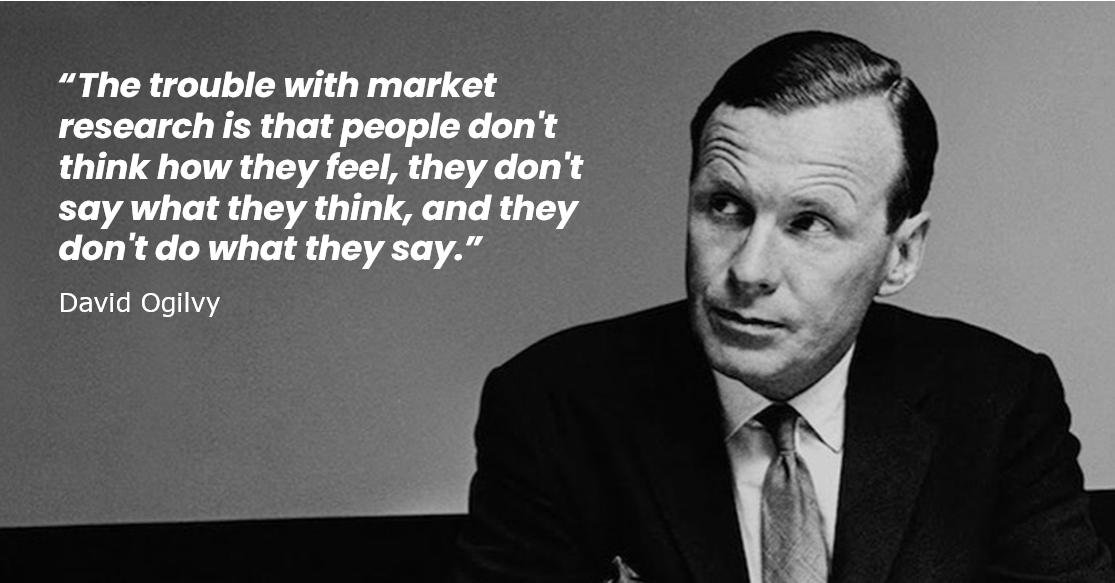
Research regularly backs this up.
The guys at Optimizely (the biggest CRO testing platform) once told me that by far the most requested tool feature in their early days was the ability to run multivariate tests (MVT). It was not an easy thing to get right, and they invested a lot of time and energy building it. After releasing it, the number of customers who actually used it? Around 1%
The software company 37signals also warn against trying to satisfy all customers and losing sight of your core audience and core product. In their book, ReWork they put it simply – “Don’t be a whore to your customers”.
Shoes of Prey in Australia understands the perils of this only too well. CEO Michael Fox openly admitted that a core reason the business failed after 10 years was that they took what their customers told them at face value.
"While our mass-market customer told us they wanted to customise …what they were consciously telling us and what they subconsciously wanted … were effectively opposites".
Michael Moore, CEO Shoes of Prey
The key here is not to stop listening to your customers, of course, it’s to carefully consider what they are saying, what their true motivations and biases might be, and if their needs actually align with your brand.
As Peep Laja from ConversionXL neatly puts it:
"Be brand-first. Have a strong point of view and stay true to your brand principles. Filter all research through your brand lens".
Peep Laja, ConversionXL
Another key weapon in your arsenal here should be split testing. Testing new ideas on a subset of your audience before upscaling is a fantastic way to understand if customers behave in the way they suggested they would. Painted door tests are another great way to validate ideas with minimal investment.
Being customer-led can lead to brand homogeneity
A strong proponent of BX over CX is Adam Farrier. He makes the case that many brands these days are focused too much on fixing small CX and UX problems, ironing out an existing journey, or as he puts it, “fixing potholes in the road with post-it notes”.
With attention spent addressing micro pain points, brands are not so focused on creating delightful and memorable experiences. This risks a loss of what makes a brand unique, interesting, even arresting perhaps.
Adam points out that by just listening to the customer, brands start to become vanilla, with little differentiation.
A great example of this can be seen when looking at the logos of top designer fashion houses. In their drive to modernise and appeal to what younger audiences want, they have as a result lost a lot of their identity:
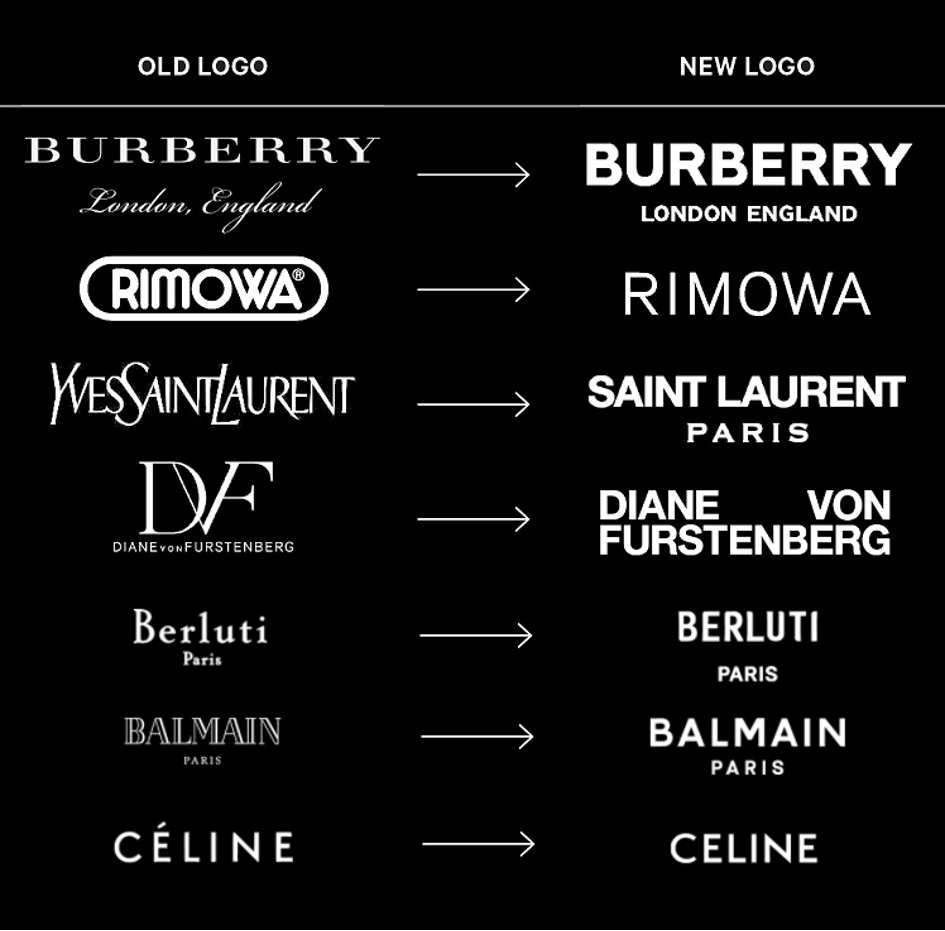
Contrast this with the Chicago Bulls who, despite being founded 55 years ago, are the only NBA franchise to have never changed their logo:
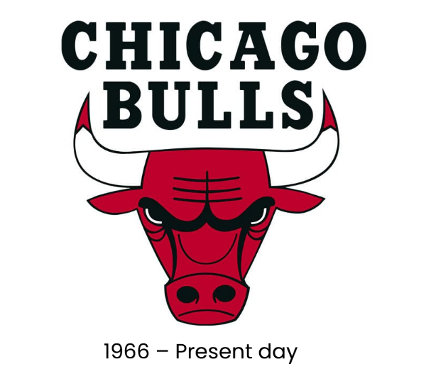
Their logo still looks great today, and their brand is among the most recognised and respected in all of sport. Most top websites today, regardless of sector, tend to look and act largely the same, often driven by a desire to offer a great customer experience. They have big glossy images, rich media, lots of social proof, fast delivery and free returns, and accept PayPal payment. The list goes on.
This stuff is without a doubt vital, but when a trigger event sparks a need in a user, what is it about your brand that will force recall? Why would someone seek out your brand over others? If you cannot answer this, you may need to spend more time optimising your brand experience.
To give some examples of companies with powerful brand identities, who will hold their position even when challenged by customers, I need to look no further than two of my favourites – Marmite and Yorkshire Tea.


Marmite
Studies have shown that only a third of people actually love Marmite (the majority don’t). Does this mean to satisfy more potential customers they will go back to the drawing board with their recipe, or try to create a marmite ‘lite’ that will convert the haters? No, they won’t.
Aside from being obvious sacrilege, the makers know doing so will dilute their brand and its core (and unique) marketing message, “You either love it or hate it!”. So strong is this slogan, in fact, that now people commonly refer to something as being ‘Marmite’ if it generates polarised opinion.
Yorkshire Tea
Yorkshire Tea got sucked into something of a Twitter storm when Conservative MP Rishi Sunak tweeted a picture of himself using the product to make a brew:
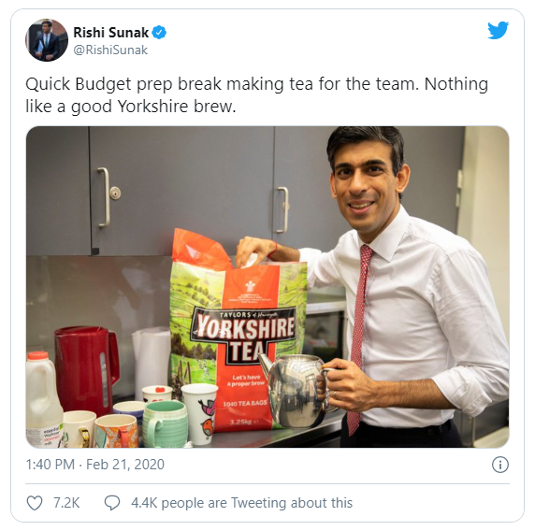
A backlash and a fair bit of trolling ensued from those accusing the brand of product placement and aligning with a political party.
Thankfully, the brand has a strong identity as both playful, but firm on its views where it needs to be. So instead of pandering to the public and trying to keep everyone happy, they spoke as they always had done. This led to some brilliant responses, such as:
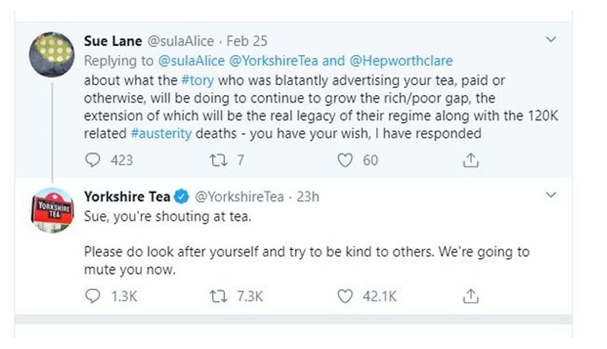
Yorkshire Tea also has consistency as a brand. They stand up for what they believe it, even when it risks alienating some people (and losing customers). When far-right YouTuber Laura Towler suggested Yorkshire Tea aligned with her thinking over the Black Lives Matter campaign, they were quick to set her straight:
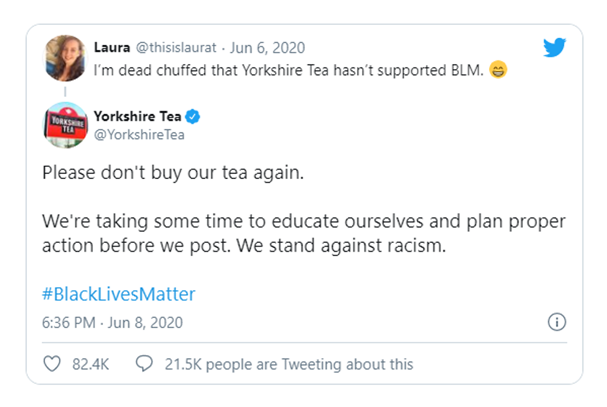
Truly ground-breaking innovations don’t address existing needs, they create them
Henry Ford once famously said:
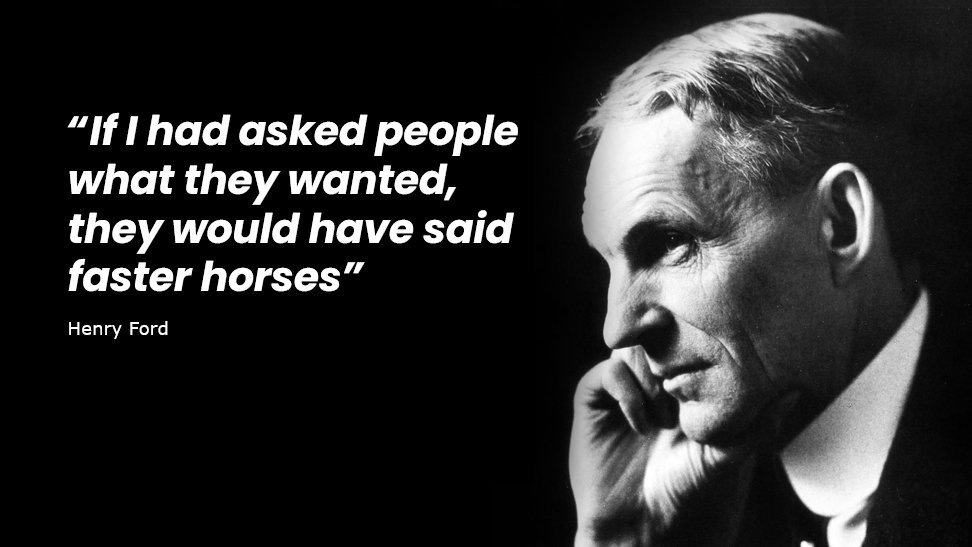
Except he didn’t say this. There is absolutely no source for this quote. Someone just made it up, and others (including myself) repeated it without knowing any better. There is a lesson here.
That doesn’t mean it’s not correct though. People likely would not have asked Ford for a car.
Maslow’s Hierarchy of Needs states that humans have basic physiological and safety needs to stay alive, then psychological and self-fulfilment needs to maintain mental health and happiness.
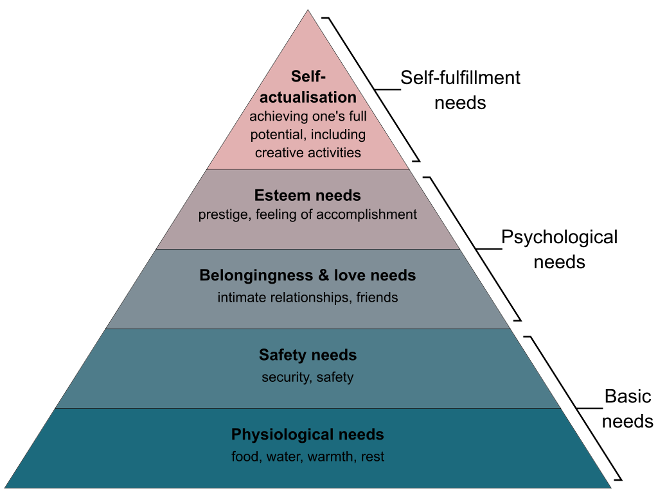
Nowhere on Maslow’s pyramid does it mention people’s need to listen to music whilst on the move, or for a device that cleans your dishes whilst they sleep. Nor did humans have these needs for hundreds of thousands of years. So where did they come from?
The answer is they develop when either a new pleasure is introduced (e.g. listening to music via a Sony Walkman), or some pain is removed that people didn’t know they had until it was pointed out to them (E.g. the dishwasher suddenly made washing up by hand a chore).
But these are still not really ‘needs’ in the purest sense. When we talk about customer ‘needs’, in most cases, we’re actually talking about the customer ‘wants’. Steve Jobs knew this well and is quoted as saying:
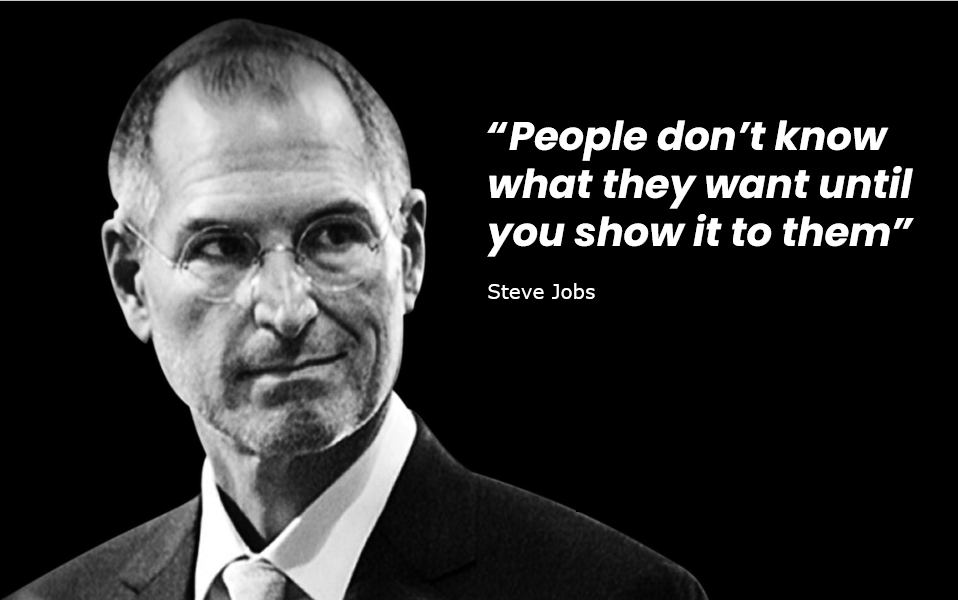
He did actually say this. I checked.
Take the iPad, for example. Before Apple introduced the iPad if you’d asked people what they wanted, they likely wouldn’t have said: “something the size of a small laptop screen that doesn’t have a separate keyboard that is difficult to hold and has nowhere obvious to store it".
No one actually needed an iPad. Yet, with some brilliant design and very clever marketing, people began to want one, and thus a product category was created.
Likewise, nobody needed a brown, sugary, fizzy drink until Coca Cola started marketing one and suddenly everyone wanted it, leading to one of the most profitable products in the world…and an obesity epidemic.
So, if you’re only listening to existing customer wants or pain points, and not spending time and effort innovating in areas they’ve not even yet considered, you’ll never produce anything revolutionary.
Not all brands are in the position to be able to create entirely new product categories of course, and that’s OK. The point is to consider what new your brand could offer instead of just focusing on how your brand can satisfy present wants. Even if you land somewhere in the middle, you’ll still end up with a more unique and innovative solution.
In summary
A brand that only listens to customers and always tries to give them want they want leaves itself open to being misled, losing its identity and stunting innovation.
In fact, sometimes a brand can woefully neglect customer experience, but still, be incredibly successful, and I can find no better example of this than easyJet.
Here is a company that is frequently in the news with shocking customer service stories and that has one of the worst TrustPilot ratings going:

They even announced recently that they would start charging for overhead lockers.
And yet, before Covid, the airline had a 25-year straight run of good profits. easyJet knows who they are as a brand – they are no-frills, and it appears they decide to save the money they would spend on improving customer experience to reduce fares instead.
Their website has got a lot better recently though; I'll give them that.
I’m not saying you should aspire to be easyJet of course, but make sure you give your brand at least as much focus as your customers.

How to prioritise digital marketing activity more effectively
In this guide, we highlight the key benefits of prioritising tactics, introduce two proven prioritisation models (one simple and one more advanced), plus show you what to do once you have your prioritised list.
Keep up to date with Fresh Egg
Join our email list like thousands of other marketing professionals to get updates on key industry changes, early access to free resources and exclusive invitations to Fresh Egg events in your inbox